




Dampness in kitchen cupboards can be a frustrating and persistent problem that can lead to the growth of mold and unpleasant odors. Not only can this affect the quality of your food and the overall cleanliness of your kitchen, but it can also be a health hazard for you and your family. Fortunately, there are several effective methods that can help you eliminate dampness in your kitchen cupboards and ensure a dry and hygienic storage space for your food and kitchenware.
1. Proper Ventilation: One of the main causes of dampness in kitchen cupboards is a lack of proper ventilation. Make sure that your kitchen is well-ventilated by installing an exhaust fan or opening windows when cooking or using the dishwasher. This will help to minimize the condensation that can lead to dampness and mold growth.
2. Use Moisture Absorbent Materials: To prevent and eliminate dampness in your kitchen cupboards, consider using moisture absorbent materials such as silica gel packets or moisture-absorbing crystals. Place these materials in your cupboards to help absorb excess moisture and prevent mold growth. Remember to replace them regularly to maintain their effectiveness.
3. Check for Leaks: Another common cause of dampness in kitchen cupboards is water leaks. Regularly check your sink, dishwasher, and pipes for any leaks or water damage. Fix any leaks promptly to avoid further water accumulation and dampness in your cupboards.
4. Proper Storage: Properly organizing and storing your kitchen items can also help to prevent dampness in your cupboards. Ensure that your food containers and kitchenware are completely dry before placing them in the cupboards. Additionally, avoid overcrowding your cupboards, as this can restrict airflow and contribute to moisture buildup.
5. Regular Cleaning: Regularly cleaning your kitchen cupboards is essential for preventing and eliminating dampness. Use a mild detergent and warm water to clean the interior and exterior surfaces of your cupboards, paying special attention to corners and crevices where mold can grow. Dry the cupboards thoroughly after cleaning to avoid moisture retention.
By following these effective methods, you can eliminate dampness in your kitchen cupboards and create a dry and hygienic storage space for your food and kitchenware. Remember to address any underlying issues such as leaks or ventilation problems to prevent dampness from recurring in the future. Keeping your cupboards dry and mold-free will contribute to a healthier and more pleasant cooking experience in your kitchen.
Methods to Eliminate Dampness in Kitchen Cupboards
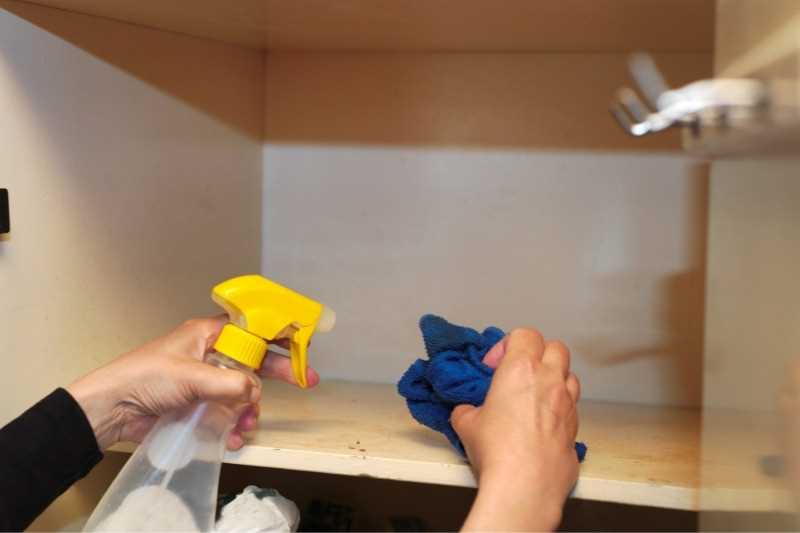
1. Proper Ventilation
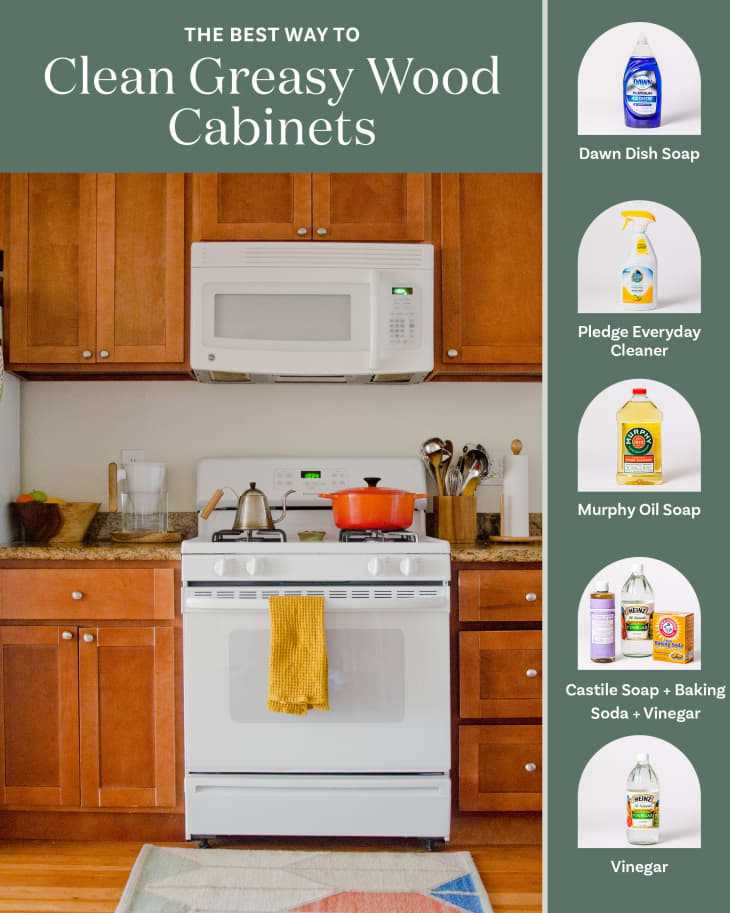
Dampness in kitchen cupboards can often occur due to a lack of proper ventilation. To eliminate dampness, make sure that your kitchen is well-ventilated. Open windows and doors to allow air circulation, and use exhaust fans when cooking or washing dishes to remove excess moisture.
2. Remove Moisture Sources
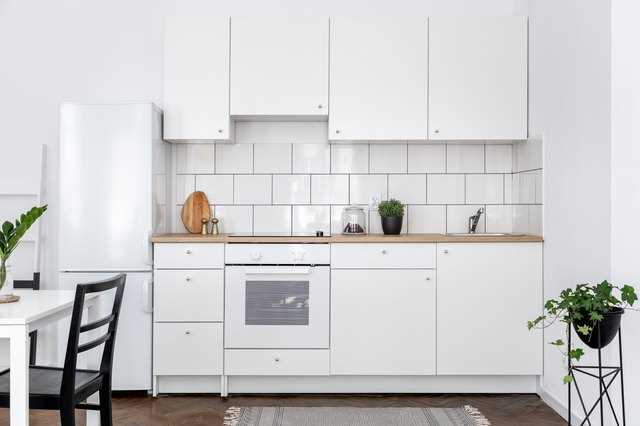
Identify and remove any sources of moisture in your kitchen cupboards. This may include leaky pipes, dripping faucets, or condensation from appliances. Repair any leaks and ensure that surfaces are dry before storing items in the cupboards.
3. Use Moisture Absorbent Materials
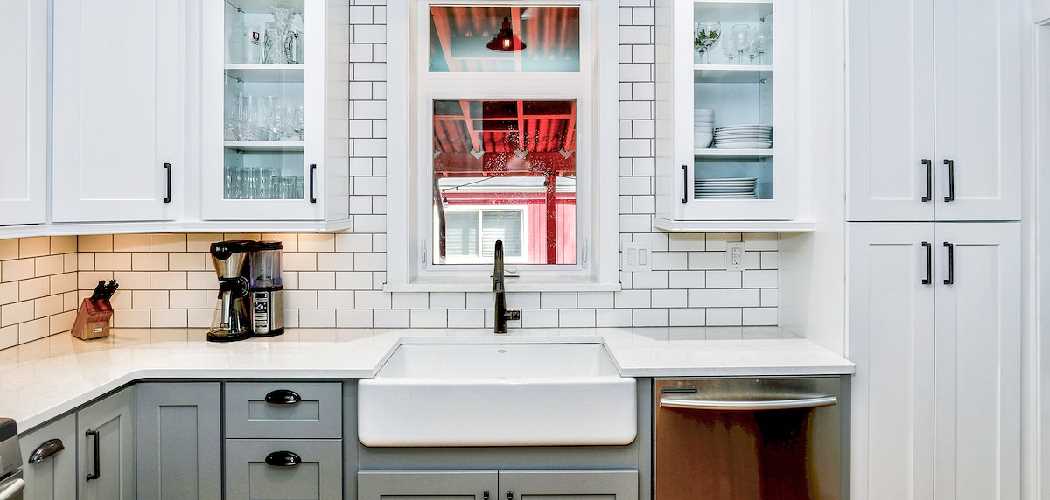
Place moisture absorbent materials, such as silica gel packs or desiccants, inside your kitchen cupboards. These materials will help to absorb excess moisture and reduce dampness. Remember to replace them regularly to maintain their effectiveness.
4. Invest in a Dehumidifier
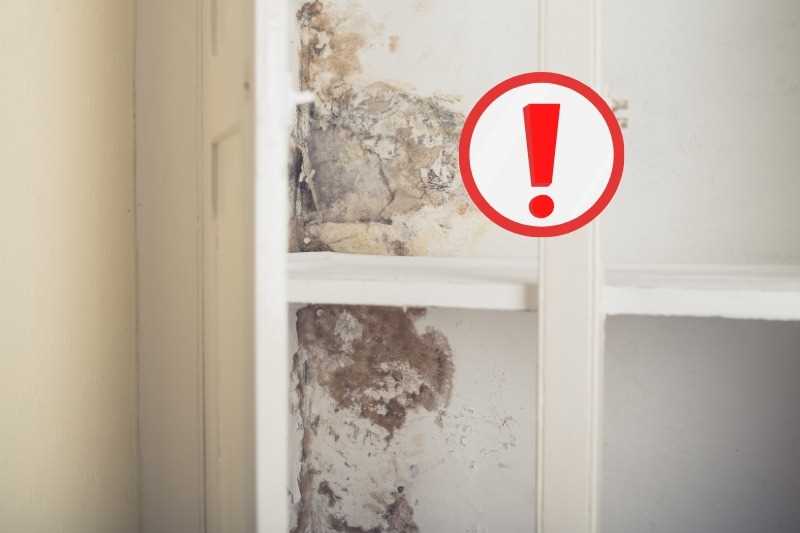
If you live in a particularly humid climate or have persistent dampness issues, consider investing in a dehumidifier for your kitchen. A dehumidifier will help to remove excess moisture from the air, reducing dampness in your cupboards. Make sure to follow the manufacturer’s instructions for optimal usage.
5. Regular Cleaning and Maintenance
Regularly clean and maintain your kitchen cupboards to prevent the accumulation of moisture and dampness. Wipe down the interior of the cabinets with a mild cleaning solution to remove any mold or mildew. Pay attention to areas prone to dampness, such as corners and near water sources.
- Ensure that the cupboards are completely dry before restocking them with items.
- Avoid overcrowding the cupboards, as this can restrict airflow and contribute to dampness.
By implementing these methods, you can effectively eliminate dampness in your kitchen cupboards and create a dry and healthy storage space for your items.
Identify the Source of Moisture
Dampness in kitchen cupboards can be caused by a variety of factors. It is important to identify the source of moisture in order to effectively eliminate it and prevent future damage.
Here are some common sources of moisture in kitchen cupboards:
- Leaky pipes or faucets: Check for any signs of water leakage around your sink or pipes. This can be a common cause of dampness in cupboards located near these areas.
- Poor ventilation: Inadequate air circulation can lead to the buildup of moisture in enclosed spaces, such as cupboards. Ensure that your kitchen is properly ventilated and consider adding a fan or extractor hood to improve airflow.
- Condensation: If your kitchen is frequently steamy or humid, condensation may be forming on the surfaces of your cupboards. This can occur when hot air meets a cold surface. Avoid placing hot appliances near cupboards and use a dehumidifier if necessary.
- Water infiltration: Check for any areas where water may be entering your kitchen, such as through windows, walls, or the roof. Make repairs as needed to prevent water from seeping into your cupboards.
- Poor insulation: Insufficient insulation can allow moisture to seep into your kitchen from the outside. Consider adding insulation to the walls and ceiling to prevent dampness in cupboards.
By identifying the source of moisture in your kitchen cupboards, you can take the necessary steps to eliminate it and prevent future dampness. This will help to protect your belongings and maintain the overall cleanliness and functionality of your kitchen.
Ensure Proper Ventilation
Proper ventilation is crucial in preventing dampness in kitchen cupboards.
Without proper ventilation, moisture can accumulate inside the cupboards, leading to the growth of mold and mildew.
Here are a few ways to ensure proper ventilation in your kitchen:
- Install an exhaust fan: An exhaust fan helps to remove steam and moisture from the air. Place the exhaust fan near the stove or any other area where moisture is likely to build up.
- Use a dehumidifier: A dehumidifier can be used to reduce moisture levels in the air. Place it in the kitchen or nearby areas prone to dampness.
- Open windows and doors: Opening windows and doors can help to let in fresh air and improve air circulation. This can help to prevent moisture from accumulating in the cupboards.
- Install vents: Consider installing vents in the kitchen to allow for better air circulation. Vents can be placed near the ceiling or in the walls to let out stale air and bring in fresh air.
Note: It’s important to ensure that the kitchen is properly ventilated even when cooking. This can be done by turning on the exhaust fan and opening windows or doors to let out steam and moisture.
Use Moisture-absorbing Materials
One effective method to eliminate dampness in kitchen cupboards is to use moisture-absorbing materials. These materials can help absorb excess moisture in the air and prevent it from accumulating inside the cupboards. Here are some options for moisture-absorbing materials:
- Silica Gel Packets: Silica gel packets are small packets filled with silica gel, a highly absorbent material. You can place these packets inside the kitchen cupboards to absorb moisture. Make sure to replace them regularly to maintain their effectiveness.
- Baking Soda: Baking soda is a natural moisture absorber and can help reduce dampness in cupboards. Place an open container of baking soda inside the cupboards to absorb excess moisture. Replace the baking soda every few months.
- Charcoal: Charcoal is another natural moisture-absorbing material. Place a few pieces of charcoal inside the cupboards to absorb moisture. Replace the charcoal every few months to maintain its effectiveness.
- Moisture-absorbing Packets: You can also find moisture-absorbing packets specifically designed for damp spaces like kitchen cupboards. These packets contain moisture-absorbing crystals and can be easily placed inside the cupboards.
Using moisture-absorbing materials is a simple and cost-effective way to eliminate dampness in kitchen cupboards. They can help prevent the growth of mold and mildew and keep your cupboards clean and dry.
Apply Waterproof Sealant
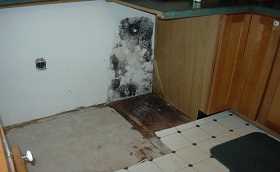
One effective method to eliminate dampness in kitchen cupboards is to apply a waterproof sealant. This will create a barrier that prevents moisture from seeping into the wood or other materials of the cupboard, keeping it dry and free from dampness.
To apply a waterproof sealant, follow these steps:
- Remove all items from the cupboards and clean them thoroughly using a mild detergent and warm water. Make sure to dry them completely before proceeding.
- Inspect the cupboards for any signs of damage or cracks. These should be repaired before applying the sealant to ensure its effectiveness.
- Choose a waterproof sealant suitable for the material of your cupboards, such as silicone-based or epoxy sealants. These can be found at hardware stores or online.
- Apply the sealant using a brush or roller, ensuring even coverage on all surfaces of the cupboards. Pay extra attention to areas that are more prone to dampness, such as corners and edges.
- Allow the sealant to dry completely according to the manufacturer’s instructions. This may take several hours or even overnight.
- Once the sealant is dry, check for any missed spots or areas that may need an additional coat of sealant.
- Reinstall the items back into the cupboards once the sealant is completely dry and cured. Enjoy your now moisture-free kitchen cupboards!
By applying a waterproof sealant, you can effectively protect your kitchen cupboards from dampness and extend their lifespan. Remember to regularly inspect and maintain the sealant to ensure its effectiveness over time.
Regular Cleaning and Maintenance
To prevent dampness in your kitchen cupboards, it is important to establish a regular cleaning and maintenance routine. By keeping your cupboards clean and dry, you can minimize the risk of moisture buildup and mold growth.
Cleaning Tips:
- Wipe down the interior and exterior surfaces of your cupboards with a damp cloth regularly. This will help remove any dirt, dust, or spills that can contribute to dampness.
- Use a mild detergent or vinegar solution to clean stubborn stains or grease buildup. Make sure to rinse thoroughly and dry the surfaces afterwards.
- Pay attention to the corners and crevices of the cupboards, as these areas can harbor moisture and dirt. Use a small brush or toothbrush to reach into these tight spaces.
Maintenance Tips:
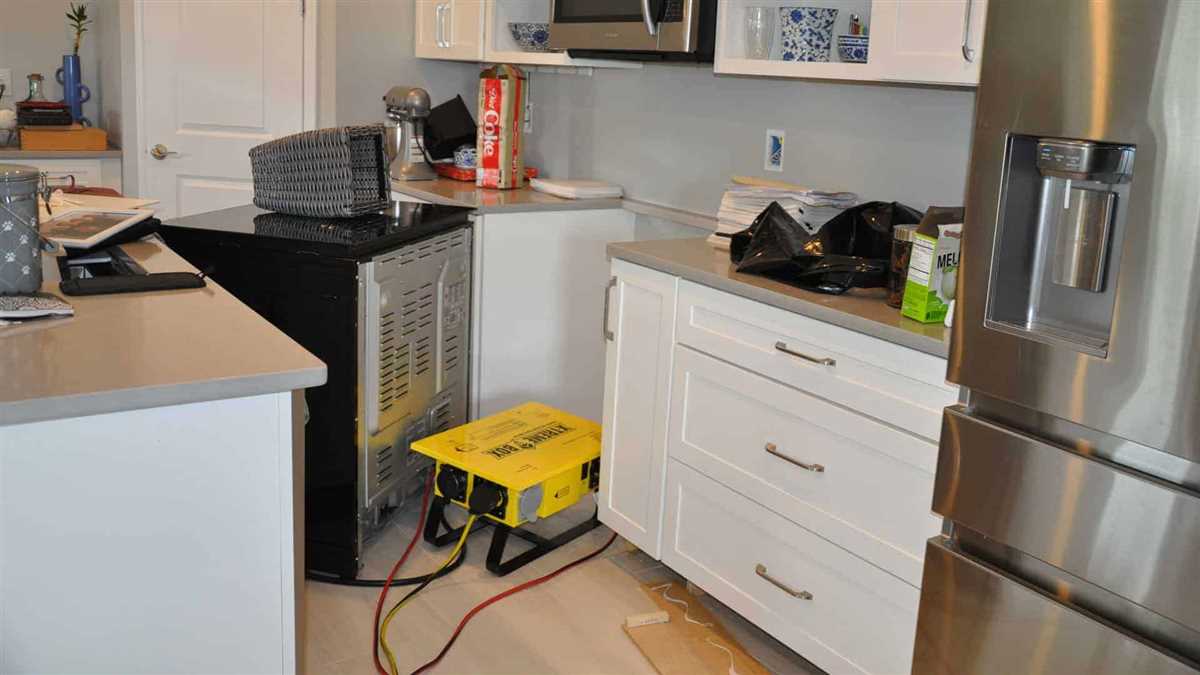
- Regularly inspect your cupboards for any signs of moisture or mold. If you notice any dampness or musty odors, take immediate action to address the issue.
- Check for any leaks or plumbing issues in the kitchen that could be contributing to the dampness. Repair any leaks promptly to prevent further damage.
- Ensure proper ventilation in your kitchen by opening windows or using an exhaust fan while cooking or doing activities that generate moisture.
- Consider using moisture absorbers or desiccants inside your cupboards to help control humidity levels and prevent dampness.
By following these regular cleaning and maintenance practices, you can keep your kitchen cupboards dry and free from dampness. This will not only protect your belongings but also promote a healthy and hygienic environment in your kitchen.
FAQ
What are some common causes of dampness in kitchen cupboards?
Some common causes of dampness in kitchen cupboards include water leaks, condensation, high humidity levels, and poor ventilation.
How can water leaks be detected and fixed in kitchen cupboards?
To detect water leaks in kitchen cupboards, you can look for any signs of water stains, dampness, or mold growth. Once a leak is detected, it is important to fix it by identifying the source of the leak and repairing or replacing the affected plumbing or appliance.
What are some effective methods for reducing humidity levels in kitchen cupboards?
Some effective methods for reducing humidity levels in kitchen cupboards include using dehumidifiers, installing ventilation fans, opening windows to promote air circulation, and using moisture-absorbing materials such as silica gel or charcoal.
How can condensation be minimized in kitchen cupboards?
Condensation in kitchen cupboards can be minimized by improving ventilation and air circulation, using airtight containers to store food and ingredients, using a dehumidifier or moisture absorbers, and wiping down any moisture or condensation as soon as it is noticed.













